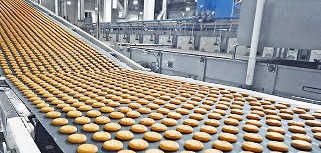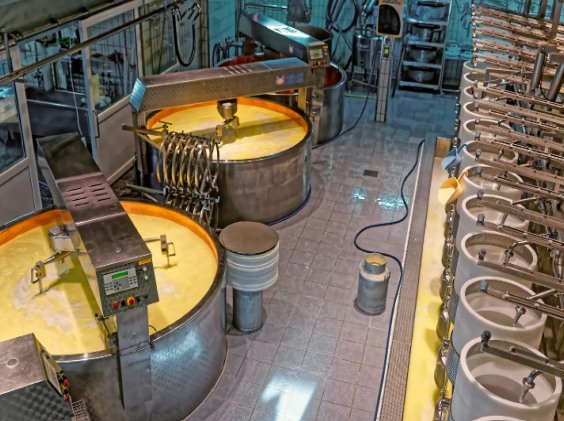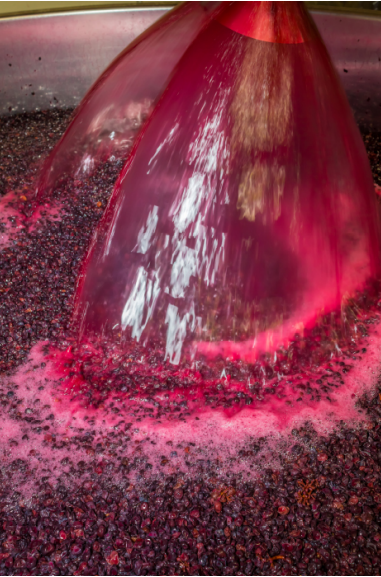Food & Beverage Production
The development of digitalization in the food and beverage industry has a huge effect on how factories produces food and beverages. It is rapidly changing the industry with businesses adopting new technologies such as smart sensors in the entire production process to improve their operation, reduce operating cost and, increase yield and competitiveness.
Featured Applications
Cookie Production

The quantitative online analysis of the raw materials for cookie production is important as it can determine the specification and quality of all raw materials such as the ingredients. Such process control throughout the manufacturing process will help to increase production output with less downtime and damaged product.
With our high speed Near-Infrared (NIR) spectroscopy system, it can provide 670 measurements per seconds with the factory process control integration and also comply to international food laws and regulations.
Butter Fat Process

Milk is the key ingredient in the production of all dairy products. Raw milk has three main components – fat, protein and lactose. The differences in the milk composition can have an impact on the quality and properties of the final dairy products.
Monitoring the desired ratios of these various milk components is important during dairy production.
Our Near-Infrared (NIR) spectrometer is designed for in-situ analysis with 3-A certified hygienic optical probe to identify chemical compounds in the complex mixtures during this dairy processing.
Fermentation of Saccharomyces Cerevisiae

Process in-line monitoring of aerobic fermentation of Saccharomyces Cerevisiae (yeast).
Our Raman optical spectroscopy allows rapid, non-invasive and simultaneous determination of a number of analytes.
- Monitoring of substrate breakdown (glucose) and product formation (ethanol)
- In-line monitoring of glucose and ethanol during yeast fermentation
- Simple evaluation by univariate calibration models
- Independent external validation by means of HPLC analysis.
Optimization of Beer Fermentation Process

Traditionally, the brewing process has been viewed as an artform but with higher demands for quality and consistency in the craft brewing industry, scientific analysis is now a crucial element of the fermentation process.
Our Near-Infrared (NIR) spectrometers offers an easy, effective, and cost-efficient in-line solution to monitor critical parameters, such as hops components or alcohol concentration.
Its ability to monitor the fermentation steps automatically enhances the product consistency and presents cost savings due to the minimization of reprocessing, as well as on time, energy, and reagent costs of traditional laboratory measurements.
In-Line Monitoring of
Wine Fermentation

A wine’s quality – whether measured by an occasional drinker or by a professional sommelier – is, ultimately, a sensory measurement of a vast number of chemical components. Chemically, the fermentation stage is the most influential part of a wine’s development.
With our combined UV-Vis/NIR spectrometers, the spectroscopic analysis can offer winemakers a deeper insight during and after the fermentation stage.
With in-line and real-time quantitative analysis, this will help to enhance control over their finished product. Winemakers can use these results to fine-tune their processes and produce wines that boast higher quality or specific characteristics.
In-Situ Measurements
of Maize

Determination of Biomass to monitor the selected parameters during the whole stadium of growth.
- Biomass,
- Protein,
- N-nutritional status, etc.
Using our Near-Infrared (NIR) technology, these measurements can now be performed directly in the field
The portable spectrometer system is perfectly suited for mobile and precise data acquisition in the laboratory, a green house and on the fields with automatic data collection.
Forage Analysis in Harvesters

Analysis of forage is essential for animal nutrition optimization, crop pricing and overall farm productivity.
Forage analysis is vital for every farmer who produces or uses forage. The quality of forage influences both the price a farmer will receive for their hay and the health and well-being of the animals eating it.
Our rugged Near-Infrared (NIR) technology now brings easy, real-time analysis to the field. It has the advantages over the traditional wet chemistry method for forage profiling. Essential factors for forage include:
- Moisture and dry matter
- Crude Protein
- Starch
- Sugars
- Fiber